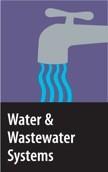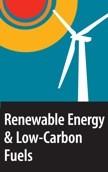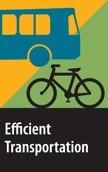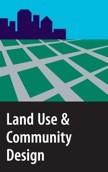We will continue to update this page as new practices emerge.
Contact the Sustainability Program team to share the actions
your agency is taking and to include them in this framework.
Energy Efficiency

Economic and Climate Considerations
- Analyze rate schedules to ensure they are most effective for
your agency at this time.
- Work with energy provider to access technical assistance and
financial incentives, such as facility audits, rebates, on-bill
financing, loans, savings-by-design and demand management
programs.
- Use existing financing programs and utility rebates to
implement low cost energy efficiency measures.
- Promote utility incentives to help local businesses save
money and earn bill credits, such as air conditioning cycling,
demand response, critical peak pricing and energy advisor
programs.
- Utilize the shelter at home mandates to retrofit empty
commercial and municipal buildings.
- Support PACE Programs to assist residents in obtaining
Property Assessed Clean Energy Financing for energy efficiency
and renewable energy projects.
- Deploy resources to electrify buildings and
transportation.
Health and Safety
- Ensure all consumers, particularly vulnerable populations,
stay connected to essential utility services.
- Promote programs that offer residents and businesses safer
materials for weatherization and energy efficiency to improve
indoor air quality.
- Ensure access to all for telehealth and online education by
promoting policies and programs that prevent service disruptions.
- Seek to improve health and safety of all California’s
existing buildings by improving support for low-income
weatherization and energy efficiency.
Equity
- Work with utility providers to ensure low income and
vulnerable populations are safeguarded against energy power loss
by supporting:
- Restoration of power to disconnected homes without a
reconnection fee.
- Statewide utility shutoff protections and expansion of energy
assistance programs.
- Suspension of electricity disconnections and credit action
due to non-payment.
- Bill assistance and late fee forgiveness for businesses and
residents.
- Bill payment plans with reasonable payback terms
post-COVID-19.
- Low income Energy Assistance Plans such as LIHEAP, CARE, FERA
and Medical Baseline.
- Prioritize energy efficiency programs and projects for small
and medium businesses in marginalized communities.
Water & Wastewater Systems

Economic and Climate Considerations
- Use existing financing mechanisms and utility rebates to
expand programs to increase efficiency and water-reuse.
- Reduce turf and grass in agency landscaped areas and replace
with native plants and xeriscaping.
- Implement drought tolerant and hydro-design principles to
group compatible plants based upon water needs for agency parks
and landscaping.
- Use compost, bio solids and mulch in agency landscaping as a
water conservation measure.
Health and Safety
- Keep abreast of the latest CDC recommendations regarding
safety precautions for wastewater workers. The virus that causes
COVID-19 has been found in untreated wastewater.
- Post signage discouraging the flushing of disinfecting wipes
to prevent sewers clogs and backups at wastewater treatment
plants.
- Ensure that all employees engage in proper handwashing
practices related to COVID-19.
- Require building owners and managers to minimize water
stagnation during closures and address building water quality
before reopening.
- Ensure drinking water meets state and federal standards.
- Continue bacteriological monitoring to ensure water is safe
to drink and to ease the resumption of activities post
shelter-in-place.
- Continue source water monitoring, treated water sampling and
nitrate treatment on a regular schedule.
- Join the California Water/Wastewater Agency Response Network
(CalWARN), a statewide mutual assistance organization.
- Replace broken water meters immediately. Provide assistance
to customers to do so in a timely and coordinated manner.
Equity
- Ensure access to running water, or provide sanitation
stations for handwashing for vulnerable populations.
- Support LIHEAP Cash and Crisis grants to be used for
heat-related water service.
- Suspend water shutoffs for non-payment.
- Provide water services payment arrangements.
Green Building

Economic and Climate Considerations
- Create a dedicated page on the agency’s website to help
residents find green building information and resources.
- Invest in urban greening and other multi-benefit
resilience measures, especially in marginalized communities.
- Provide information to homeowners and businesses about
available utility rebates for new residences and commercial
buildings that exceed California’s Title 24 energy code by 15
percent.
- Provide incentives, such as expedited review/permit
processing, to encourage green building.
Health and Safety
- Work with large employers, hospitals and schools to expand
remote programs.
Equity
- Invest in equitable broadband access and computer-equipment
lending.
- Promote use of zero or low volatile organic compound (VOC)
paints and materials to reduce air quality impacts on vulnerable
populations.
- Control concentration of indoor air pollutants, such as
ammonia, formaldehyde, benzene, total VOCs, radon, PM2.5 and
PM10.
Waste Reduction & Recycling

Economic and Climate Considerations
- Encourage local restaurants to use compostable food ware,
where appropriate.
- Provide information online showing how to dispose of each
type of takeout container.
- Educate residents about the importance of not contaminating
recyclable waste streams.
- Offer virtual composting and sustainable landscaping classes
to the community.
- Cohost virtual “fun in the garden” and “cooking academy”
youth workshops with local organizations to promote home
composting and vermicomposting.
Health and Safety
- Coordinate with the California Department of Resources,
Recycling, and Recovery (CalRecycle) on the latest information,
resources and programs to assist local businesses.
- Work with solid waste service providers to adopt enforcement
mechanisms for residents and businesses that misuse or
contaminate green waste and recycling containers.
- Review CalRecycle’s COVID-19 guidelines to understand impacts
and changes to resource recovery and recycling requirements.
- Adopt social distancing guidelines to allow for opening of
household hazardous waste drop off. Such as asking all staff and
customers to wear face coverings and to keep waste in trunk or
bed of the vehicle and to not exit their car during drop off.
Equity
- Expand food recovery programs.
- Partner with schools and other food distribution centers to
distribute locally produced food and milk, to avoid waste farmers
are experiencing due to the disruption in the supply chain.
- Support local food banks by advertising/streamlining
volunteer services and food donations. Post tips on agency
website to help residents avoid food waste.
- Expand opportunities for farmers to sell products through new
opportunities.
Climate-Friendly Purchasing

Economic and Climate Considerations
- Develop and launch a Work From Home Resources portal for city
employees to make telecommuting efficient and accessible.
- Participate in multi-agency procurement pools that have a
climate-friendly purchasing component such as compostable food
ware containers.
- Encourage the practice of not purchasing new materials, such
as office supplies and furniture, through the reuse of existing
items in surplus that are thoroughly sanitized.
- Consider efficient transportation methods and local economic
development when purchasing goods and services, such as using
local vendors and or locally produced goods.
Health and Safety
- Eliminate requirements to conduct a competitive solicitation
for contracting for emergency-related goods and services.
- Develop innovative partnerships with private and nonprofit
sectors to meet local demands.
- Use existing contracts or known vendors; or use approved
vendor or supplier lists that have already been vetted.
- Make sure that each contractor has a city point of contact
(e.g., a project or agency manager) to reach out to ask questions
about items pertaining to submission of payments to support
efficient and timely purchasing, etc.
- Create a data-sharing platform to share due diligence
information about vendors with your sister cities.
Equity
- Encourage departments to creatively reach diverse small
businesses for their contracting needs.
- Include opportunities for Minority, Women, and Disadvantaged
Business Enterprise firms in your procurements.
- Even as priorities change, ensure that procurement processes
are transparent and grounded in sound, participatory
decision-making.
Renewable Energy & Low Carbon Fuels

Economic and Climate Considerations
- Enter into power purchase agreements (PPA) to meet all or
part of the electrical energy requirements of buildings and
facilities through a consistent monthly payment to reduce
electricity costs.
- Work with Energy Service Companies (ESCOs) to determine rate
changes that can be made right away to save money on electricity
costs through on bill financing.
- Consider microgrids to ensure energy reliability during
emergency situations.
Health and Safety
- Facilitate online permitting and inspections.
- Conduct virtual renewable energy workshops for residential,
commercial and industrial property owners.
Equity
- Partner with local business accelerator or university to
develop a green and clean tech pipeline in the community as a
recovery strategy.
- Elevate distributed energy resources such as solar PV and
solar+storage as a sustainable and equitable recovery strategy.
- Promote and provide information on the Self-Generation
Incentive Program (SGIP) distributed energy systems installed on
the customer’s side of the utility meter.
- Offer online educational resources to the community on the
link between renewable energy, low carbon fuels and air quality.
- Invest in green, innovative, entrepreneurial and inclusive
workforce training programs to get people back to work.
- Develop job training programs and other opportunities that
promote upper watershed restoration for wildfire prevention,
carbon sequestration and water supply reliability.
Efficient Transportation

Economic and Climate Considerations
- Assess the short and long-term mobility needs of the
community, including the efficient movement of people and goods.
- Implement Intelligent Transportation Systems (ITS) for
surveillance and traffic control, such as synchronized signals,
transit and emergency signal priority, and other traffic flow
management techniques as appropriate, to improve traffic flow and
reduce vehicle idling.
- Make reducing vehicle-miles traveled (VMT) a high-priority
criteria in the creation of any new policies, programs and
projects.
- If furloughs or schedule augmentations are necessary, allow
employees to work from home to avoid driving into the office for
half days.
- Implement a flexible work schedule for agency employees,
incorporating telecommuting and modified schedules to reduce
agency energy use and vehicle miles traveled.
- Establish dedicated delivery/loading zones for restaurants,
commercial businesses and school lunch pick up.
- Increase online permitting services to reduce the need to
travel to agency offices for minor permits.
- Institute strict limits on parking outside restaurants and
retail businesses, so cars can only stay there for the time it
takes for an employee to obtain a carryout order.
- Classify bike shops as essential services.
- Include information on agency website about state and federal
clean vehicle rebates.
- Create and distribute bike maps and “safe routes to school”
maps to community members.
Health and Safety
- Create a “slow streets program” to encourage safe and healthy
outdoor activity.
- Close streets that go through parks to cars to discourage
driving to parks.
- Partner with local community organizations to identify and
develop a connected network of green pedestrian and bicycle
streets to facilitate social distancing.
- Adjust signal timing to slow vehicles and promote pedestrian
safety.
- Set traffic signal system to “night mode” to improve
pedestrian safety, curb speeding and eliminate the chance that
drivers would encounter several green lights in a row.
- Reset high volume traffic lights to automatically display
pedestrian crossing signals for every light cycle.
- Convert actuated to fixed signals where possible to ensure
“touchless” pedestrian crosswalks.
- Implement a robust cleaning program for public transportation
vehicles to instill rider confidence.
- Establish back door boarding policies to alleviate crowding
and support operator safety.
- Create a website highlighting walking opportunities within
the city.
Equity
- Consider making public transportation “fare free” to ensure
all Californians have options to work and essential services.
- Consider free transit passes for vulnerable riders and
essential workers.
- Establish protected “pop up” bike lanes to ensure safe travel
for residents without cars.
- Offer free or reduce priced bike share access to provide low
income and essential worker transportation options.
- Establish and promote a cleaning program for micro-mobility
transportation services.
- Use government property to create “walk-up” COVID-19 testing
locations accessible to people outside cars.
Land Use & Community Design

Economic and Climate Considerations
- Prioritize land use initiatives that focus on job creation,
housing production and the environment.
- Assess permit process and fee structure to increase
affordable housing, infill development and transit-oriented
housing.
- Focus place-making initiatives for health and safety by
pedestrianizing downtown areas and neighborhoods, opening streets
for walking, limiting vehicle traffic and widening of
sidewalks.
- Developing objective design standards or pre-approved site
and architectural plans that facilitate non-discretionary
permitting.
- Encouraging Accessory Dwelling Units (ADUs) and other
innovative building types through actions above state law
requirements such as, outreach, fee waivers, pre-approved plans,
website zoning clearance assistance and other homeowner tools or
finance tools.
- Include planning staff as part of your hazard mitigation or
emergency response team, or repurpose them track and collect data
needed for relevant local policy implications related to
COVID-19.
- Establish a policy that increases the available open space
(such as parks, green belts, hiking trails, etc.) to support
different types of uses and the different recreational needs of
the community.
- Adopt policies in the general plan, climate action plan or
other appropriate policy document to address the potential land
use and community design effects of climate change (such as sea
level rise, heat events, wildfires, etc.) especially for
providing essential public services.
- Focus on permitting that creates short-term solutions to help
keep businesses open safely such as permitting a drive-through
window or repurposing on-street parking spaces to facilitate
pick-up of restaurant take-out orders.
- Expand uses allowed in home occupations to enable businesses
to work out of the home until social distancing requirements can
be relaxed.
- Resist efforts to waive design and development standards for
projects that won’t be completed for another 12 to 24 months.
Such waivers may have limited value in helping businesses weather
the short-term economic crisis.
Health and Safety
- Create an online “self-service” permit portal for building
permits, building inspections, planning applications, research
permits, fee payments and property information to reduce in
person contact and expedite services.
- Make online forms “fillable” electronically so that customers
don’t have to print them out and instead can submit them
digitally.
- Modify counter operations to assist customers through email,
phone and videoconferencing.
- Implement a physical drop-off system to facilitate the
exchange of documents and plans, as well as the filing of project
applications, without requiring face-to-face meetings.
- Encourage clients to schedule one-on-one phone calls with
staff, in instances where in person meetings are necessary.
- Prioritize projects and code revisions needed to protect the
health, safety and welfare of community members, such as
drive-thru testing centers.
- Institute programs that streamline or consolidate review
processes.
- Move commission meetings and public engagement to online or
virtual platforms.
- Consider spaces to serve multi-purposes, if necessary, such
as transforming a vacant arena into a care facility for COVID-19
patients.
- Publicize any changes made to planning process broadly to
inform community stakeholders of the temporary change in
operations.
Equity
- Prioritize homeless and supportive housing production.
- Support financing of new construction and rehabilitation of
exisiting affordable housing.
- Identify and address food deserts to support temporary and
long term solutions.
- Increase access to broadband and Wi-Fi by rolling out “Wi-Fi
buses” in neighborhoods without broadband access.
- Consider easing development regulations for market-rate and
affordable housing projects.
- Consider rezoning for significant additional housing capacity
without or with lesser discretionary review or establishing
zoning to permit residential development by-right, particularly
multifamily.
- Increase access and availability of parks and open space for
community use.
- Support long-term community-resilience planning to
reduce future shocks, with particular attention to vulnerable
communities.
Open Space & Offsetting Carbon Emissions

Economic and Climate Considerations
- Manage parks, open space, recreational facilities and other
natural areas owned or operated by the agency to ensure the
long-term health and viability of trees and other vegetation.
- Deputize residents to update inventories of natural features
in parks and school grounds; residents may share findings on apps
such as iNaturalist.
- Crowd-source photos of where residents find nearby nature on
the city website or city social media channels.
- Create a citywide contest to count the most squirrels,
robins, crows, etc.
- Provide guidance for parents to lead nature story walks and
ease virtual library access to nature stories easy to tell (in
multiple languages).
- Create a scavenger hunt or bingo game to identify local
street trees and birds, and disseminate on multiple city
websites.
- Increase opportunities for recreational open space by closing
streets or utilizing under-used spaces.
- Update List of Road Closures to allow people to be outdoors
while practicing social distancing.
- Arrange for school grounds with any natural features
(including grass) to remain open.
- Highlight livestreams available from city parks, zoos and
natural areas.
- Utilize CivicSpark Fellows to support staff capacity to move
forward on climate-related issues.
- In advance of fire season, remove invasive non-native plants
in order to reduce risk of forest and grassland fires (and the
associated greenhouse gas release).
- Promote sustainable native forests and grasslands.
- Where feasible, direct new development away from open space
and agricultural lands in order to take advantage of carbon
storage opportunities.
- Provide tree planting resources and information on the agency
website to encourage residential tree planting for those
sheltering in place.
- Create incentives for community organizations, businesses and
residents to reduce their carbon emissions, including the
purchase of third-party verified greenhouse gas emission offsets.
Health and Safety
- Clarify via public announcement and on the city website that
parks, greenways and trails remain open for use with physical
distancing rules in effect.
- Post a video of the mayor taking a walk around their
neighborhood or in a park.
Equity
- Collaborate with public agency partners such as schools and
libraries to disseminate virtual and neighborhood-based options
for connecting children to nature.
- Proceed with long-rang climate action planning efforts,
taking into consideration vulnerable communities, economic
recovery and climate resilience.
- Enact a policy to purchase locally grown food for agency food
purchases, when feasible, to promote retention of local
agricultural land uses.
- Promote the purchase of locally-grown produce through farmers
markets and other measures, with appropriate social distancing,
to support the availability of healthy, locally grown produce.
- Provide a virtual workshop on healthy eating and nutrition
and provide low-income attendees with coupons to use towards
purchasing healthy locally-grown produce at farmers markets.
Community & Individual Action

Economic and Climate Considerations
- Offer online climate activities and challenges for community
members to do at home including a carbon footprint calculator,
virtual workshops and events, and resources focused on a specific
monthly topic.
- Establish a small business task force of local, state,
private and philanthropic leaders to pursue the creation of
innovative small business loan and support programs; at minimum,
a two-year horizon should be considered for these programs.
- Convene philanthropic organizations, private donors and
large-scale anchors to create budget support gap measures for
creative and arts organizations.
- Create a task force of large-scale service employers, grocery
stores and delivery services to provide appropriate wages and
benefits, as well to identify best-practices in design for social
distancing and the use of protective gear for front-line
employees. Work with these groups to disseminate best practices
to smaller businesses and organizations.
- Create an online portal to solicit innovative ideas from
companies and individuals that can contribute to solutions to
navigate the complexities of COVID-19.
- Execute a direct marketing and outreach strategy to local
businesses and entrepreneurs to ensure they are aware of federal,
state and local loan programs.
- Deploy a “Made in …” campaign as a means for promoting local
businesses and services. Community residents are very much
inclined to help local businesses weather this crisis.
- Develop an immediate platform or hub (wiki page or website)
for sharing entrepreneurship and small businesses resources
throughout the community. Entrepreneurs need a one-stop shop.
- Deploy a business technical resource team to provide
assistance on the design retrofit and health checks required to
reopen safely.
- Partner with local anchor institutions and larger businesses
to commit to temporary local purchasing goals, using the size and
scale of these entities to increase demand for local goods and
services.
- Establish a creative economy team to assess the impact on the
creative economy, to marshal funding for arts and cultural
organizations and to provide technical advice to smaller
galleries, independent theaters and music venues on how to get
back up and running safely.
Health and Safety
- Mobilize, in partnership with employers and state officials,
to provide protective gear now and for the long-term for
frontline service workers.
- Work with employment offices and workforce providers to
mobilize to fill employment openings at grocery stores and
warehouses and for delivery workers.
- Partner with economic development officials, community
development groups, anchor institutions and local social service
agencies to develop a coordinated strategy for addressing and
mitigating the health-care vulnerabilities of less advantaged
communities.
- Focus workforce and placement initiatives on developing
training and job opportunities for residents of less advantaged
neighborhoods.
- Operate indoor recreation facilities as emergency care
facilities for children of parents on the front lines of the
COVID-19 outbreak and low-income families.
- Host a large-scale drive-thru emergency food distribution for
low-income families and seniors.
- Coordinate with local networks of early childhood care and
education providers, out-of-school time providers and parents to
disseminate tips and resources.
- Shift non-essential staff to work with volunteers and Meals
on Wheels to conduct daily check-ins for seniors.
- Partner with local restaurants to deliver meals for
low-income seniors.
- Create a Pandemic Community Advisory Group to gather input,
advice and reactions on an ongoing basis; this group also will
play a key role in helping to determine criteria for distribution
of donations.
- Accept tax-deductible monetary donations to bolster response
efforts.
- Form a Community Relief Fund to receive and direct charitable
donations to sustain and protect local residents and businesses
during the COVID-19 health emergency.
- Connect residents 55 years of age and older with volunteers
that can run errands, grocery shop, and offer companionship.
- Encourage backyard and community gardening, yard work, and
tree planting – provide seeds, seedlings, mulch if available via
meal distribution sites.
- Encourage residents, and children in particular, to get
outdoors at least once each day, and to connect to nature in any
available form.
- Create pathways for jobs by allocating resources to
community-ambassador positions that support emergency
communications and neighborhood-level preparedness and recovery.
- Expand Community Emergency Response Training (CERTs) programs
to train residents in climate resilience and disaster-response
skills.
Equity
- Utilize a variety of high-tech and low-tech engagement
methods to interact with the community including texting,
television/local access channels, online surveys, virtual
meetings, livestreams and more.
- Ensure that information about COVID-19 precautions, orders
and instructions are provided in multiple languages.
- Launch virtual resources and activities to help keep youth
socially engaged, including sustainability-themed arts and crafts
ideas and activities and fun physical activities, fitness
challenges and wellness resources.
- Focus the efforts of related initiatives and working groups
for anchor institutions, small business and arts and cultural
institutions on disadvantaged areas.
- Collaborate with priority communnities to develop plans and
programs to help build long-term resilience to climate change.
 Menu
Menu










